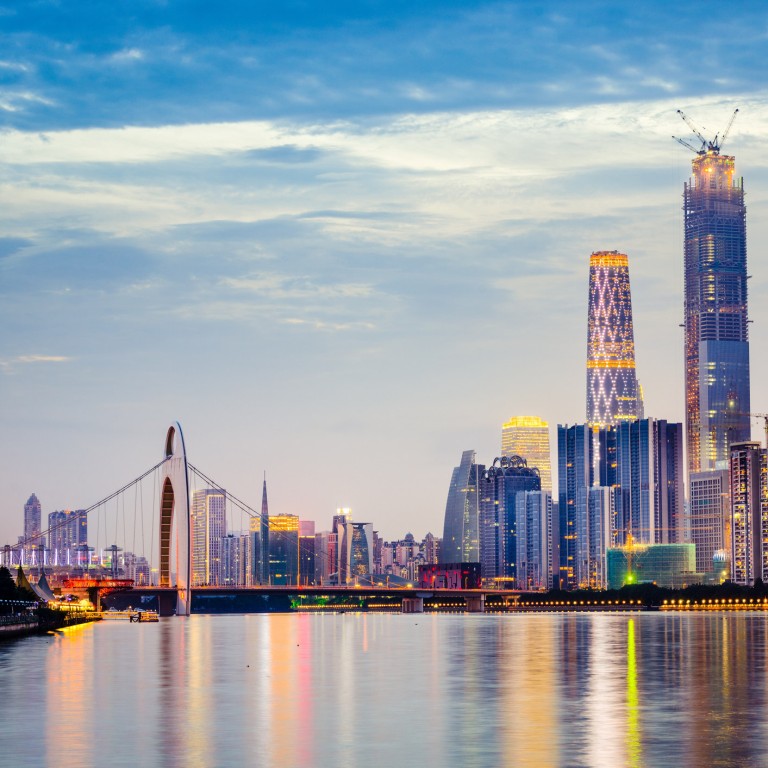
6 in 10 Greater Bay Area firms plan to boost investment in Asean countries
- Singapore, Malaysia, Vietnam and Thailand are most popular investment destinations, finds poll of 657 firms by the Hong Kong Trade Development Council and UOB
- 660 million population and China ties are part of region’s draw. Malaysia lures consumer goods, Thailand industrial products and Singapore financial services
Enterprises from sectors including consumer goods, financial services, real estate, hospitality and construction were asked to rate their keenness to invest or expand operations in the countries, with 1 being “extremely unlikely” and 10 being “extremely likely”.
“The presence of a young population, rapid economic development in recent years and the emergence of the middle class has made Asean a market with enormous potential for Greater Bay Area-based businesses,” it added.

Analysts suggested that Asean could hugely benefit from its exposure to Greater Bay Area firms, such as tapping their capital, technology and connection to the world market, and governments could do more to attract them.
Albert Hu, associate professor of economics at the National University of Singapore (NUS), said cross-border regulations had to be harmonised to facilitate the movement of goods and workers.
For example, he said that countries had different standards for product safety and design and such differences could stand in the way of international trade even when tariff barriers were largely removed. “There is also the issue of mutual recognition of professional qualifications, which can impede the movement of professional workers,” he said.
Lawrence Loh, professor of strategy and policy at NUS, said Asean countries could complement each other’s distinct qualities to attract Greater Bay Area businesses to the region.
He suggested that Singapore could team up with Malaysia or Thailand to provide companies a “full suite of value-added capabilities”. Indonesia has a large domestic market and could be roped in to offer complete end-to-end value chains and link suppliers and production firms in other Asean locations.
Loh added that it was clear that investments from the Greater Bay Area would create new jobs and generate multiplier effects on domestic economic growth in the region. “More notably, the Greater Bay Area is a highly innovative region and the investments from there may invigorate the creativity and dynamism of the Asean economies,” he said.

While Singapore boasts world-class infrastructure and governance, Hu said other less-developed countries within Asean, namely Laos, Cambodia and Myanmar, lagged behind. These countries would need to improve their physical connectivity with the rest of the world to draw investments, and this would include not only transport links but also energy infrastructure as well as information and communication technologies.
The report also mentioned this, highlighting that not many Greater Bay Area firms used Asean as their production or sourcing base due to the region’s “poor or inadequate infrastructure”.
How the Greater Bay Area will cement Hong Kong’s status as a health care research hub
In the case of Myanmar, which has been ruled by the junta since the February 1 coup that saw the overthrow of an elected government, political stability was required to attract foreign investors, Hu said.
Part of the report focused on Hong Kong’s role in facilitating trade between the Greater Bay Area and Southeast Asia. On a scale of 1 to 10, firms gave the importance of Hong Kong a score of 7.33. Enterprises also lauded the city’s connectivity with Asean countries and the cross-border flow of products and human resources.
Hu, the associate professor, suggested that countries within the region, including Singapore, could play a more active role. He cited how the city state was a hub for financial services, international trade and logistics with a highly-educated professional labour force.
Singapore was also a founding member of the Asean bloc and well-connected with countries in the region, he said. “Greater Bay Area firms can find all the business services they require in Singapore.”
Similarly, Loh said that even as Hong Kong served as a “good bridge” between the Greater Bay Area and Asean, there could be more than a single bridge. “We can have a two-bridge system where the Greater Bay Area links to Asean through Hong Kong and another localised hub like Singapore.”

